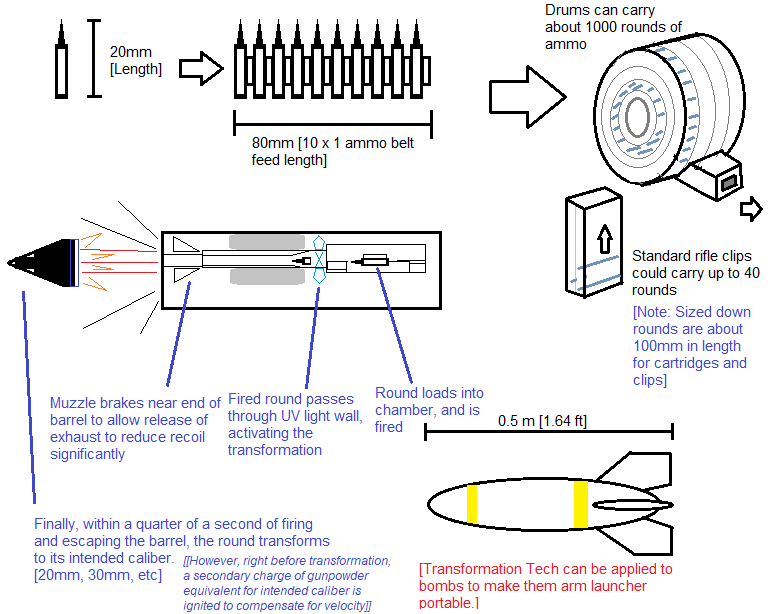
Background:
The latest advancement in military weaponry, the atomic bomb, comes at a crucial time as Japanese forces begin to invade Hawaii in 1943. As tests were being conducted and weapon production was underway, one scientist, Professor Gordon Laminar, made a discovery regarding atomic power. During a bomb test, after scouring the blast zone for analysis, Professor Laminar discovered that some objects, such as rocks composed of carbon were instantly changed to become diamond with silicon lacing.
This intrigued the professor, and made him start developing theories on atomic reintegration using nuclear fission. He proposed that certain objects and their elements can be manipulated into others by means of these forces. Under supervision from the government, he was able to conduct tests regarding his theories. His first attempt yielded somewhat of a success, with him trying to convert an iron chair into a steel mallet. By directing a small nuclear force via laser into a small scale model of the desired object made out of similar elements, he is able to recreate objects into completely different entities.
After some refinement, his theory was a success. Though the viability and application of his studies were still shrouded in mystery, a general overseeing his work suggested that it could be used for military purposes. The man, General Alan Bradbury of the U.S Army Air Corps, suggested if they could use this technology to turn humans into war weapons in an effort to decrease manpower across all branches. While the professor was skeptical at both the risky and ethical practices of such methods, he eventually agreed with the general to test this application.
The main problem that the professor sought out was sustaining a “conscious” state in the weapon mode of transformation. After some volunteers reached out to the general, during which he wad able to greenlight the project as “AADP: Anthropomorphic Aircraft Development Program”. After deliberating months of trying to solve for the consciousness factor in transformation, he could not achieve the exact calculations on how to make this possible. Many of the individuals who were first subjected to the transformation did so successfully, but where unable to communicate with. The subjects afterwards were stuck to their new forms.
On the verge of program shutdown, one night the professor, already exhausted from his work, fell asleep on his desk as he laid out his equations. On that dark night, a breezed entered his studies and a transparent silhouette of a woman appeared before him, and presented him with a note before disappearing back into the night. He shortly woke up and discovered the note, which contained one equation. And that was all he needed.
Within days, he put his new theory to test, and the first successful test subject, Anna Tipton, was able to transform into an aircraft and hold consciousness in her alt form. She relayed communications back to the professor, with General Bradbury overseeing, and went on a successful test flight. Upon returning to the hangar, now the professor became concerned if she would be able to revert able into her human form, as he was never able to achieve this prior.
To his complete surprise, Anne was able to transform back to her human self, without any visible problem or deformity at first. The professor marveled at this event, as he proclaimed this to be his most defining moment in his life, and how his would usher in a new era of technological advancement. Upon submittal of the program findings by General Bradbury, the U.S government, during a time of distress, deemed this program to continue under complete secrecy, and for the time being, solely focusing on aeronautics considering it being the first successful platform they achieved.
(C) Stormeagle Productions 2011-2022